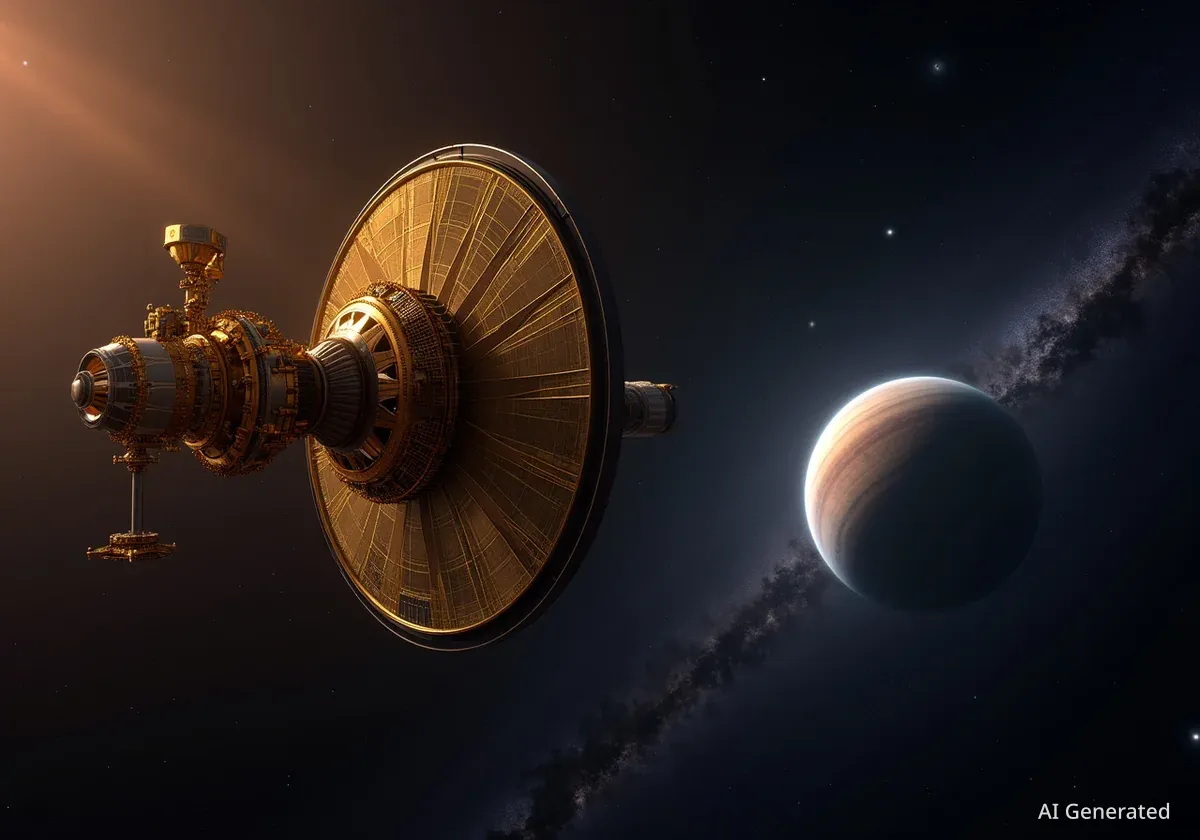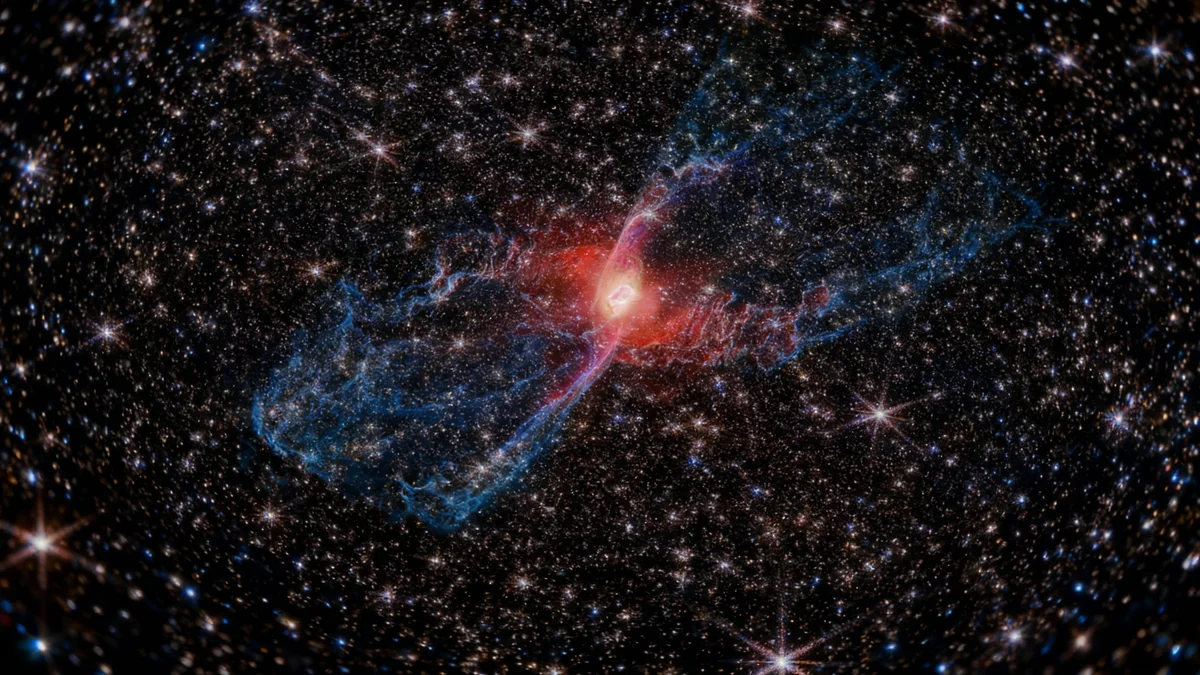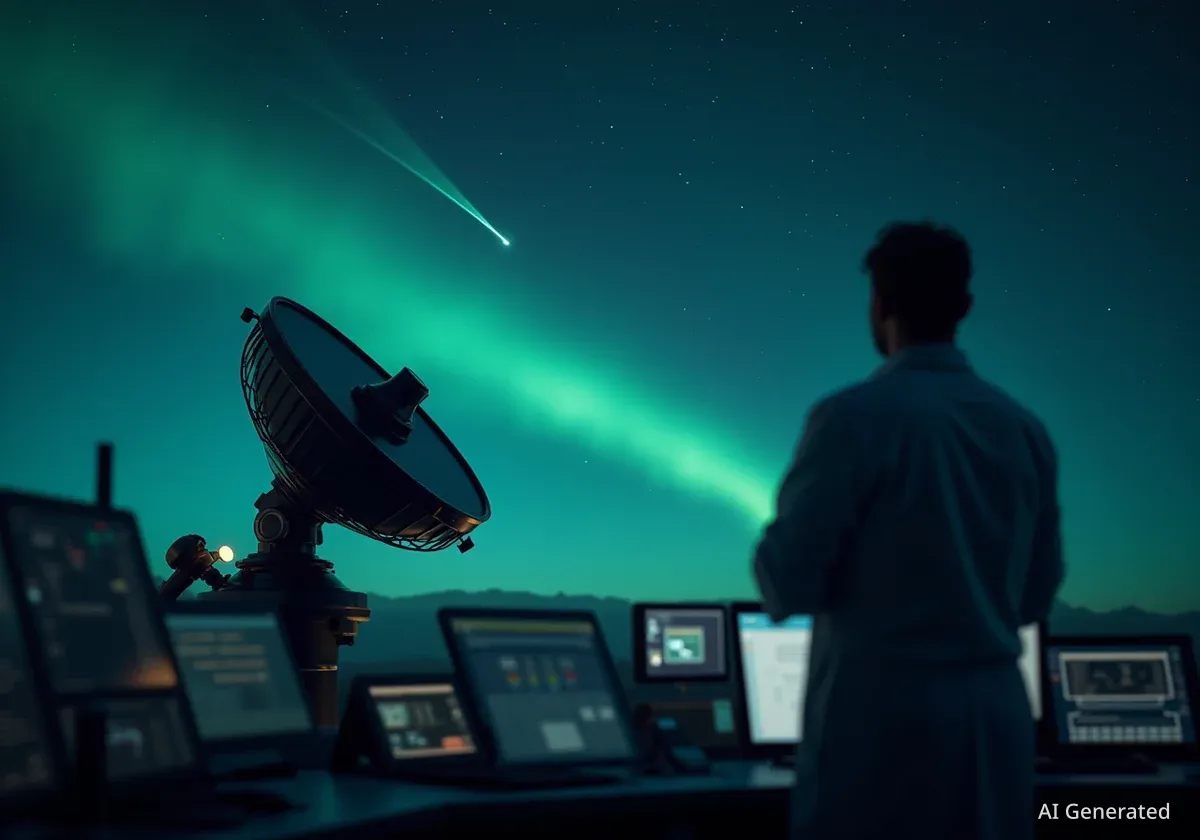NASA's James Webb Space Telescope has identified a disk of gas and dust circling a distant exoplanet, providing scientists with a rare opportunity to observe the potential formation of moons. The discovery around the exoplanet CT Cha b, located approximately 625 light-years from Earth, offers a unique window into the processes that may have shaped our own solar system billions of years ago.
Key Takeaways
- The James Webb Space Telescope detected a circumplanetary disk around the exoplanet CT Cha b.
- This disk contains the raw materials, such as dust and gas, necessary for moon formation.
- The system is located 625 light-years away, offering a snapshot of planetary system development.
- No moons have yet formed, allowing scientists to study the earliest stages of this process.
A Glimpse into a Distant Planetary System
The subject of this significant observation is CT Cha b, an exoplanet that orbits a young star. An exoplanet is a planet that exists outside of our solar system. Data gathered by the James Webb Space Telescope revealed the presence of a substantial ring of material orbiting this planet.
This structure is known as a circumplanetary disk. It is a collection of gas, dust, and other debris that has accumulated around a planet. Scientists believe these disks are the primary environments where moons are born, much like the larger circumstellar disks around stars are where planets themselves form.
Understanding Circumplanetary Disks
A circumplanetary disk is a natural satellite nursery. As a young, massive planet forms, its gravity pulls in surrounding gas and dust, creating a flattened, rotating ring. Within this disk, material can clump together over millions of years, eventually growing large enough to become moons.
The detection of such a disk provides direct evidence of the conditions that precede the creation of natural satellites. It allows researchers to move from theoretical models to direct observation of a moon-forming environment.
The Significance of the Discovery
This finding is a major step forward in understanding planetary science. According to NASA, observing this system is like looking at a "possible construction yard for moons." It allows astronomers to study the initial conditions and raw materials involved in the birth of moons.
The substantial discovery... allows for a better understanding of planet and moon formation, which is fundamental to understanding the evolution of planetary systems.
One of the most valuable aspects of this research is the ability to draw parallels to the history of our own solar system. The processes occurring around CT Cha b could be similar to those that led to the formation of Jupiter's Galilean moons or Saturn's extensive satellite system over 4.5 billion years ago.
By studying a young system in the process of development, scientists can test and refine their theories about how planetary systems, including our own, mature over time.
CT Cha b at a Glance
- Object Type: Exoplanet
- Location: 625 light-years from Earth
- Key Feature: Surrounded by a moon-forming disk
- Observatory: NASA's James Webb Space Telescope
Analyzing the Building Blocks of Moons
The James Webb Space Telescope did not just image the disk; it used spectroscopy to analyze its composition. Spectroscopy is a technique that breaks down light into its different wavelengths, allowing scientists to identify the chemical elements present in an object.
The data from Webb suggests that the disk around CT Cha b contains silicate dust, which is a key ingredient for forming rocky bodies like moons. The presence of these specific materials confirms that the disk holds the necessary building blocks for satellite formation.
Crucially, while the ingredients are present, no fully formed moons have been detected within the disk yet. This is a positive for researchers, as it means they have found a system at the very beginning of the moon-formation process. It presents a clean slate for calculating how much material is available and predicting what kind of moons might eventually form.
This pristine environment allows for a clearer study of the dynamics at play, without the gravitational influence of existing large moons complicating the observations.
The Role of the James Webb Space Telescope
This discovery highlights the advanced capabilities of the James Webb Space Telescope. Launched in December 2021, Webb is the most powerful space observatory ever built, designed to see the universe in infrared light.
Its high sensitivity and powerful instruments, like the Mid-Infrared Instrument (MIRI), are essential for detecting faint structures like the disk around CT Cha b. This type of observation would be extremely difficult, if not impossible, for ground-based telescopes or older space observatories.
Webb's primary mission is to study every phase in the history of the universe, from the first luminous glows after the Big Bang to the formation of solar systems capable of supporting life. Observing a potential moon system in the making falls squarely within its scientific objectives.
As the telescope continues its mission, it is expected to uncover more details about CT Cha b and potentially identify other similar systems, building a more complete picture of how planets and their moons come into existence across the galaxy.





